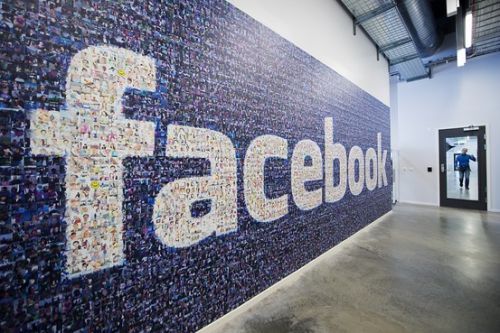文/新浪财经意见领袖(微信公众号kopleader)机构专栏 Grenoble[微博] 作者 Vincent Mangematin(法国格勒高商战略管理教授)
英特网和类似谷歌、脸书、亚马逊等相关的平台正在更新创新的资源。这并不是在科学基础上的创新,更像是在使用方式上的创新。如果说在20世纪,科学发现被看做创新的主要资源,在21世纪,似乎新的应用方式和用户社区已经成为创新的重要推手。
 21世纪互联网企业创新靠什么
21世纪互联网企业创新靠什么优步(Uber),全球最大的出租车公司,不拥有任何一辆出租车的产权;即将成为欧洲租车第一品牌的Drivy也没买过任何一辆车。脸书(Facebook),全球应用最广社交媒体,不生产任何内容;Airbnb,全球最大房屋租赁提供商,旗下没有任何一处地产。这些例子都在应证平台创新的重要性,而平台创新正在成为商业管理的新形式。平台创新有哪些特点呢?
首先,上述所有的平台都是技术和经济要素的融合。他们让那些有需求的人有可能直接对口那些能满足他们需求的人。类似iTunes这样的音乐平台是最著名的几个平台之一,但iTunes的优势并不是技术层面的,而是他们可以提供下载的音乐。这些平台可以迅速积聚资源,提供大量的音乐,从古典到新时代到饶舌说唱。这种按比例递增机制取决于与其他平台内部联通的形式。举例来说,你在这样的平台上可以找到音乐,但不仅是音乐,还有电影,视频片段和其他视频资料。
最后一点主要和类似AirBnB这样的案例相关,类似的创新是给一些闲置的资源“解冻”。举例来说,一间空置的公寓就是所谓“冻结”的——门锁了没人能入住。当你通过AirBnB或者是Roomrama租了这样一间公寓后,并不说明这间公寓就是用来做出租屋之用,只是一间闲置的公寓短期内用于出租而已。
当一间房空置时,实践者喜欢用“冻结”这个词,所以当这间房被出租了之后就变成了“解冻”。这个过程不影响实际的物业所有权,只是使用权受到影响。类似Drivy, Blablacar 或是AirBnB这样的平台就是在对一些“冻结”资源的使用权进行重组。从这个意义来说,他们并不是有关资本的创新,因为除了平台本身之外,他们不需要其他投资。
平台创新正在改变我们使用现有的网络配对资源的方式,同时也在改变资源提供者和客户的角色。当客户和生产商成为一个人时,你今天可以是优步出租的顾客,明天又可能成为优步出租的司机。你在通过AirBnB出租你的公寓时,也有可能又同时在用这个平台找房。客户可以同时也是资源提供商,反之亦然。这些网络平台不过是配对供应方和提供方的一个媒介而已。这种变化很有趣,正在影响我们管理创新的方式。
首先,这既不是一个科技的进步,也不是一个科技推进力。互联网并不新鲜,TCP/IP协议在上世纪七十年代就有了。真正新鲜的是对网络的全面应用,不仅是在家里,而且在移动设备上。互联网在匹配供需这个问题上功能强大。一开始互联网的应用方式是邮件订货销售平台,之后有发展成将分散的供应商和客户之间的配对工具。英特网不仅有能力作为供应商和客户的媒介,还有能力改变市场结构。
其次,英特网和类似谷歌[微博]、脸书、亚马逊[微博]等相关的平台正在更新创新的资源。这并不是在科学基础上的创新,更像是在使用方式上的创新。如果说在20世纪,科学发现被看做创新的主要资源,在21世纪,似乎新的应用方式和用户社区已经成为创新的重要推手。

用户激发创新和产品自身发展,这是从上世纪七十年代就开始被研究的话题,当时的研究主要集中在B2B的关系上,当时是专业的用户给产品和研发者以反馈。在B2C的关系中,重要客户则是在帮助厂家完成创新。现在这些新的网络平台通过用户社区可以直接取得创新,网络平台也需要开放他们的创新和技术开发流程。这意味着公司将失去对创新流程的控制权,而且必须分享回报。与用户社区一同管理创新,对于那些不能监控社区的公司来说是很困难的。
游戏产业在这一点做的很突出,他们和在线社区保持持续的对话,把游戏做得更加出色。包括Trackmania在内的一些公司开发一些工具,让游戏玩家可以设计他们自己的游戏背景。与此同时,Trackmania还通过在虚拟车道上打广告和组织一些活动让玩家相互竞争赚钱。为了可以受益于用户社区,厂商需要扮演乐团的角色,与用户社区互动而不是控制他们,尊重每一位玩家的特有身份。
当一家公司采用一种可以部分与玩家们分享的身份时,自由度就降低了,因为公司必须要和社区协商他们每一个创新战略。通常的创新管理是公司内部完成沟通达成一致,也就是说创新是来自于公司内部的。但基于用户的创新则要靠公司与用户之间的互动来完成。在21世纪管理创新,就是在管理公司和所处环境之间的对接和互动,已完成设计或者协同设计创新。
最后,21世纪另一个创新的主要资源就是破坏性的商业模式的演化和发展。的确,这个话题在学术界引发了诸多讨论,以对2000年初的因特网革命有更好地理解。新的商业模式不仅是创造一种可以为消费者创造价值的机制或是将这种价值转化为金钱。商业模式应该可以带领管理团队去思考他们到底是在为谁创造价值,创造的是怎样的价值。
举例来说,谷歌是一个搜索引擎为用户创造价值,但谷歌是免费的。这是因为谷歌收集大量的用户信息,而很多公司乐意掏钱去了解他们的用户和消费者。所以谷歌可以卖出他们的数据和数据分析。这种商业模式的附加价值提出一个问题,即这项业务到底是为谁,什么才是捕捉价值的最佳途径。通过传统的战略和市场途径,你瞄准的市场是你相信有意向购买你的产品或是服务的。当你采取这些新的商业模式时,你就是在探索更加复杂和多维度的市场,在这些市场中你可以对用户提供免费服务,然后通过信息卖钱。诸如脸书和谷歌。
但也有一种可能,就是用户和客户可能不一样,客户可以注册,之后为每次搜索付费,通过这样的方式用户也许可以获得更具针对性的服务。商业模式由此成为一种可控装置,可以被用来帮助学界或者经理们去理解多维市场的出现,以及创造价值和捕捉价值的复杂性如何在日益增加。商业模式本身还是一种产物,用来和他人合作,来传递某种商业形式和其所处状态的信息。
今日,管理平台创新意味着通过模式创造,以及价值创造和捕捉而设定战略。在界面价值创造/捕捉的过程中还有一个更为重要的因素,并不是价值最优化,而是认清价值是为谁而创造,以及在内部相连的市场中,有哪些不同的模式。
【原文】
In the 21st century, managing innovationmeans managing communities
By Vincent Mangematin(Professor ofStrategic Management and Associate Dean for Research, Grenoble Ecole deManagement)
Uber, the world’s largest taxi company,owns no vehicles. Drivy is becoming the European rental car leader and owns novehicles. Facebook, the world’s most popular media owner, creates no content.Airbnb, the world’s largest accommodation provider, owns no real estate. Allthese examples are revealing the growing importance of platform innovation as anew form of business management. But what are the characteristics of platforminnovation?
First of all, all these platforms combinetechnological and economic facets. They create a facility to match those whohave needs and those who can satisfy them. Music platforms like iTunes areamongst the most well-known platforms. But it is not technological advances which make theplatform known and useful - It is the breath of music it offers for download.These platforms had to scale up rapidly and offer a large variety of music,from classical to new age and rap. Scale-up mechanisms are based on structureand alliances to interconnect with other platforms. For example, you can accessmusic but also films, clips and other videos。
Finally, and as is mainly the case withAirBnB, these innovations are defreezing unused resources. For example, anempty flat is a resource which is freezed. The door is closed and no one canuse it. When you are renting a flat through AirBnB or Roomrama, the resource isnot dedicated for rental. This is an unoccupied apartment which is rented for ashort period。
Practionners are using the term freezedwhen the apartment is unoccupied and defreeze when it is rented. . Ownershipdoes not change. This is mostly the usage which is affected. Platforms likeDrivy, Blablacar or AirBnB are organising the use of resources which have beenfreezed before. In that sense, they are a non -capitalist innovation, as theydo not require other investment beyond the platform。
Platform innovations are changing the ways we use existing resourcesthrough internet matchmaking. They are also transforming the roles of suppliers and clients. Whilstclients and producers are becoming one person, one day you can be the client ofUberPop and the next one the driver. Youcan be the client of AirBnB whilst renting your apartment through AirBnB at thesame time. Clients are simultaneously suppliers at the same time andvice-versa. Platforms are just a new intermediary to match supply and demand.Something interesting is happening and it affects the ways innovation ismanaged。
Firstly, this is not a technologicaladvancement and this is not technological push. The Internet is not new,theTCP/IP protocol was introduced during the Seventies. What is radically newthough is the generalisation of the use of the Internet, not only at home butalso on mobile devices. The Internet is one of the most powerful mechanisms tomatch individuals that need something and those who have something to offer.TheInternet was first used as a mail order sales platform before developing into away to match decentralised suppliers and demand. The Internet is a generalpurpose technology which is not only an intermediary between suppliers andclients but also a powerful way to change market structure。
Secondly, the Internet and the relatedplatforms like Google, Facebook, Amazon etc. have been renewing the sources ofinnovation. It is not only science based innovation, but rather innovation interms of usages. While scientific discoveries were seen as a major source ofinnovation in the 20th century, it seems that new usages and communities arebecoming a major trigger for innovation in the 21st。
Users generated innovation and itsdevelopment, which has been studied since the 1970s and have mainly focused onB2B relationships, where professional users gave producers and developersfeedback. In B2C relationships, lead users were on the contrary identified tohelp producers in the development of innovation. Nowadays with these newplatforms, achieving innovation directly with user communities require thecompany to open up its innovation and development processes. It also means thatthe firm loses control over the innovation process and has to share thereturns. Managing innovation with user communities is challenging for companiesas they cannot monitor the community。
The game industry is known for itscontinuous dialogue with online communities to make the games more attractive.Some of the companies like Trackmania have been developing tools to allowgamers to develop their own playground. Meanwhile, Trackmania makes moneythrough advertisements on circuits and the organization of events for playersto compete in. To be able to benefit from user communities, companies have toadopt the role of orchestrator, interacting with user communities withoutcontrolling them, respecting the specific identities of each player。
When a company adopts an identity that ispartially shared with its community, its degree of freedom is reduced, as ithas to negotiate each evolution of its strategy with the community. Managementof innovation has been understood stricto sensu as the management of internalprocesses within the company. The implicit assumption for this is that sourcesof innovation are within the firm. When innovation is based on usages, thesources of innovation are located in the interactions between the firms and theusers. Management of innovation in the XXI century is the management of theinterfaces and interactions between the firm and its environment to design orco-design innovation。
Finally, another major source of innovationin the 21st Century has been theevolution and development of disruptive business models. Indeed, this topic hasgenerated a lot of discussion in academia to create a better understanding ofthe consequences of the Internet revolution in the early 2000’s. New businessmodels are more than the mechanism to create value for customers and to capturevalue from the monetization of the value delivered. Business model approacheslead the top management team to consider to whom the value is delivered andwhat is the value created。
For example, Google as a search engine iscreating value for the users. But it is free of charge. This is because Googleis collecting huge amount of data on users and because firms are willing to payto better know users and consumers that Google is able to monetize its data anddata analysis. The added value of the business model approach is to questionfor whom business is for and what are the better ways to capture value. Withtraditional strategic or marketing approaches, you target markets which youbelieve would purchase your products and services. When you are modellingthrough these new business models, youare exploring complex and multifaceted markets, on which you can offer servicesfor free to users and monetize information to clients, such as Facebook andGoogle。
In-between the cornershop which sellsproducts and Google, there is a huge variety of situations in which users andclients may differ, in which clients may subscribe to pay per use, in which theproduct or service offered may be standard or tailored. Business modelling isthus a ‘manipulable device’ that can be used to help academics or managersunderstand the emergence of multifaceted markets and the growing complexity ofvalue creation and value capture. It is also an artefact that can be used toengage with others to convey knowledge about a business and its status。
Managing innovation today means“strategising through modelling activities and value creation and capture。” Themore important element in the dyptic value creation//value capture is not theoptimisation, but the identification of, for whom value is created and whichare the different modes of capture in the interrelated markets。
(本文作者介绍:格勒诺布尔高等商学院位于欧洲“硅谷”,以科技创新结合传统商业教育,在欧洲商学院中独树一帜。格勒高商目前已成为欧洲排名前20、法国排名前6并同时拥有国际商学院最高的三重认证AMBA、AACSB、EQUIS的顶级商学。)
本文为作者独家授权新浪财经使用,请勿转载。所发表言论不代表本站观点。
《全球新闻眼》是一档由新浪财经全球记者和撰稿人团队为您呈现的原创专栏集。真相远比价值观更重要。敬请关注全球新闻眼微信公众号:全球新闻眼。扫码更方便。
